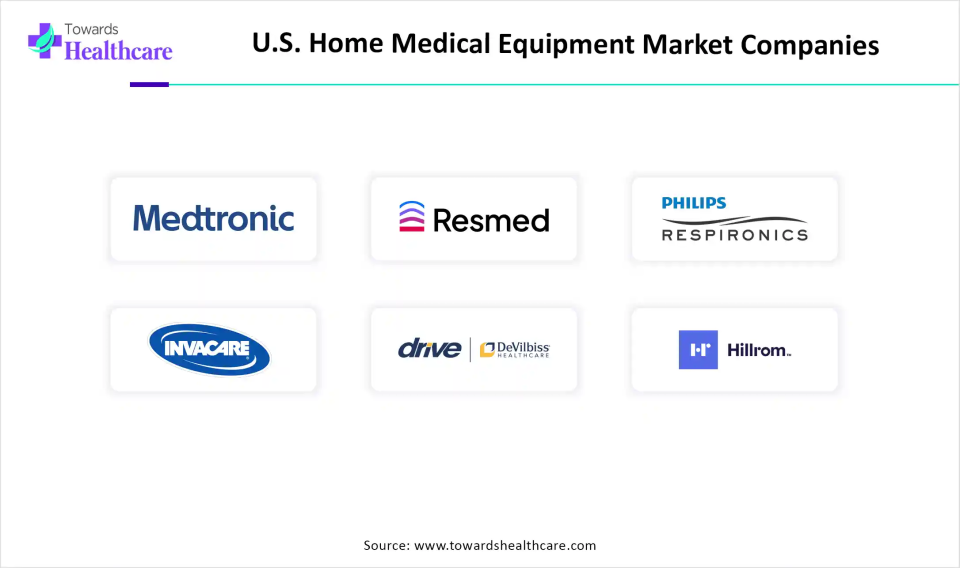

The U.S. home medical equipment market size is calculated at US$ 7.79 billion in 2024, grew to US$ 8.29 billion in 2025, and is projected to reach around US$ 14.25 billion by 2034. The market is expanding at a CAGR of 6.4% between 2025 and 2034.
Concept development, design and engineering, prototyping and testing, design validation and verification, and regulatory compliance are all part of research and development for home medical equipment. Device approval, production, and post-market monitoring are the last stages, which include thorough documentation, a strong emphasis on risk management, and adherence to regulatory norms.
Top Companies Include: Medline Industries, Invacare Corporation, Philips, Medtronic, Drive DeVilbiss Healthcare, and Sunrise Medical.
A multi-level channel system is used to market home medical equipment, with manufacturers selling to wholesalers and authorised distributors first. These organisations then provide gadgets to merchants, such as online marketplaces and medical supply stores, where final customers make purchases. Telemedicine, home healthcare providers, and direct-to-consumer sales are also becoming more significant outlets.
An initial evaluation, equipment selection, delivery and setup, patient/caregiver training, continuing monitoring and maintenance, and, if rented, equipment pickup are all steps in the process for patient assistance using home medical equipment.
In October 2024, according to AARP's senior public policy and engagement officer, Nancy LeaMond, family carers save taxpayers billions of dollars annually and provide $600 billion in unpaid labour, making them the backbone of a dysfunctional long-term care system. Enacting sensible policies that assist family carers and enable elderly Americans to remain freely in their homes, where they want, is long overdue.
Become a valued research partner with us, please feel free to contact us at sales@towardshealthcare.com